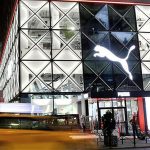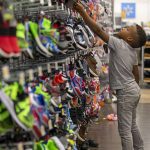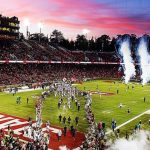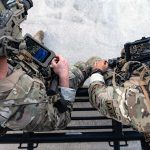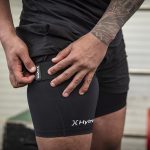Reflecting a significant shift in favor of regular-priced merchandise selling and strength in athletics, DSW Inc. reported net income from continuing operations expanded 10.7 percent in the second quarter, to $37.6 million, or 42 cents a share.
Sales increased 6.8 percent to $627.2 million with same-store sales ahead 1.8 percent.
Earnings equaled Wall Street’s consensus estimate of 42 cents but sales fell shorts of Wall Street’s average target of $636.8 million. DSW said it deliberately stocked its stores with less clearance merchandise, which bolstered its profit margins while affecting its sales. On Tuesday after DSW reported results, shares fell $3.52, or 11.4 percent, to $27.35
On a conference call with analysts, Mike MacDonald, president and CEO, said athletic posted the strongest comps with a 12 percent gain. Said MacDonald, “This was driven by strong selling across fashion and performance and across both genders. For the second quarter, our athletic category represented 16 percent of our total business, the highest penetration level we've ever achieved. We continue to create opportunities to capture demand from strong athletic momentum.”
Debbie Ferree, vice chairman and chief merchandising officer, added that fashion athletic casuals “have done exceptionally well,” specifically around more youth-oriented styles. Ferree added, “That trend has been strong all year and when I look at the back half of the year it doesn't look like that's going to let up at all.”
In other categories, men’s footwear rose 3 percent, with positive comps in dress, casual and seasonal categories. Ferree said boots, comfort and street styles are all “comping very strongly and I don't really see that changing” in the second half.
The women's category posted a flat comp, aided by increased regular price sales with particular strength in sandals that were partially offset by lower clearance merchandise sales. Merchandise margins for the women's category was meaningfully higher than last year due to lower markdowns and clearance activity.
Ferree said womens’ boots comps were up in the mid-single digits. She added, “We have moved money out of tall boots and put them into booties and that seems to be paying off very nicely for us.”
Women’s sandal comps increased 6 percent with dress up 15 percent and casual ahead 3 percent.
Overall, Ferree said women’s is seeing a shift out of some women's casual offerings into fashion athletic casual. Said Ferree, “In that casual zone overall, women's black and brown and athletic casual, I'm actually very pleased. And what I'm happy about is that the athletic casual momentum that we've seen for spring seems to be carrying through. Early indicators in the month of July for back-to-school signal that it was still trending very strongly. I don't see a reason why that would slow down.”
The accessories category recorded a 4 percent comp sales decline with handbags comping down in the low double digits.
Gross margins improved 120 basis points to 30.5 percent, primarily due to lower markdown activity.
DSW deliberately reduced in-store clearance inventory by 12 percent from the elevated clearance levels of the prior year. Regular-priced merchandise posted a mid single-digit increase in comps, partially offset by a mid single-digit decrease in clearance sales. Average unit retail increased in the low single digits, both at regular price and clearance, leading to a low single-digit increase in average dollar sales. Occupancy, distribution and fulfillment costs leveraged by 15 basis points.
Operating expense rates delevered by 80 basis points in the second quarter, driven by higher stock and incentive compensation. Combined, operating profit margin improved 40 basis points.
In terms of geographic performance, low single-digit comp sales increases were recorded in the Mid-Atlantic, the Midwest and the Northeast, while the South was flat and the West was marginally negative.
DSW opened one store and closed one in the quarter for a total of 449 at the end of the quarter. New stores opened during the first half of the year are meeting sales expectations.
In terms of small-format stores, it currently has 13 locations open with another three scheduled to open this fall.
“Some of these stores are doing better than others but all of these stores are profitable and cash flow positive,” said MacDonald. “We've applied new insights, improved the assortment process and turned on the ship-from-store program to all locations and as a result the small-format stores we opened this year got off to a faster start. We still have a lot of room to improve but we're confident that the small-format stores will benefit disproportionately from our assortment and omnichannel initiatives.”
Spring 2015 saw the launch of a refreshed brand image for DSW which featured “Real Shoe Lovers” and introduced DSW to a broader and more diverse customer base. Said MacDonald, “We've received a strong favorable response to our campaign and will build on this momentum in the fall season. Over time we expect this more inclusive and authentic approach to create greater brand awareness, acquire new customers and increase DSW's share of wallet.”
Digital marketing specifically drove sales benefits with advanced analytics used to deliver targeted messages throughout the customer journey. On-site search technology, e-mail strategy and digital media targeting all drove increased customer engagement and incremental sales, said MacDonald.
Buy online/pick up in store and buy online/ship to store are being launched in the third quarter, which will enable expedited in-store pick-up for online purchases. Said MacDonald, “Research shows that these capabilities influence where customers are likely to shop. We're planning to roll out these functionalities in stages and expect their full implementation to contribute to incremental sales volume the fall season.”
Order routing fulfillment optimization was turned on for all categories in August and is expected to reduce markdowns by fulfilling orders from slowest turning locations.
For the full year, DSW reiterated its earnings outlook to range from $1.80 to $1.90 per share, which compares to $1.69 a year ago.

